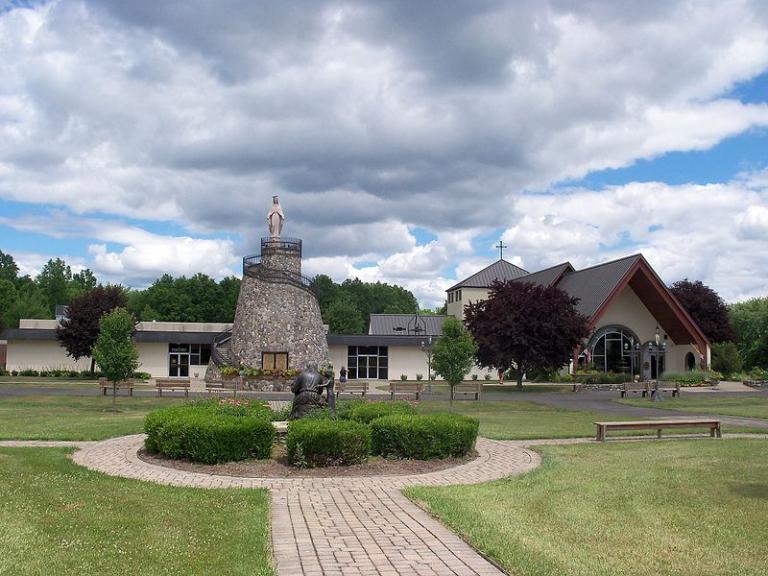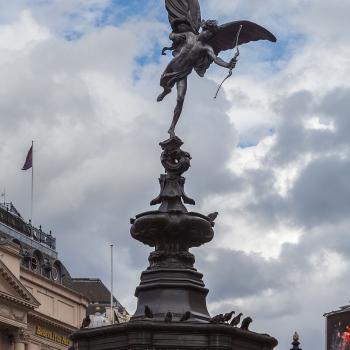
(Wikimedia Commons public domain photograph)
Arabic is built almost entirely off of triconsonantal roots — e.g., k-t-b, which connotes the idea of writing, produces such derivative words as kataba (“he wrote”), kaatib (“writer”), kitaab (“book”), maktuub (“written”), maktab (“desk”), maktaba (“library”/”bookstore”), and so forth. But it also sometimes uses quadriliteral roots — e.g. the obviously onomatopoeic verb waswasa (“to whisper”) and the noun jumhuriyya (“republic”), from the root j-m-h-r.
Given this productive structure, Arabic can integrate loan words from foreign languages with remarkable ease. For example, talfana (“to telephone s.o.”) treats the letters t-l-f-n as a quadriliteral root and creates a verb from them.
My favorite example of such a borrowing was given to me by my beloved teacher Seeger Bonebakker, who encountered it during a visit to Iraq back when he was young, it was still a kingdom, and the British were still a semi-colonial force there. He asked an Iraqi what the man thought of the English. Oh, the man replied in very classical Arabic, he liked them, but yatadamfaluuna kathiiran. Bonebakker didn’t know that verb, tadamfala, and asked the man what he meant by it. What the man had intended, as it turned out, was that he liked the British well enough, “but they call one another ‘you damned fool’ a lot.” taDaMFaLa. Somehow, I doubt that tadamfala has survived in common usage.
One of the treasures that I acquired in Cedar City last week was a copy of H. L. Mencken, The American Language: An Inquiry into the Development of English in the United States, 4th ed. (New York: Alfred A. Knopf, 1937). I’ve been browsing in it with considerable delight — I first came across Mencken in my early twenties, and have long loved his writing — and want to pass on what the man who was known as “the Sage of Baltimore” has to say about Arabic in America.
It’s not very much, and things have no doubt changed considerably since he wrote. In fact, his first edition appeared in March 1919, fully a century ago, and I don’t know whether his brief discussion of Americanized Arabic was altered at all in the fourth edition from that initial one. When he was writing, as he himself says, almost all of the Arabs in America were Syrian or (perhaps better now) Lebanese Christians, with almost no Muslims or Druze among their ranks, and there were relatively few of them. Since then, their numbers have increased considerably, and the proportion of Muslims is much higher. Moreover, the descendants of the original Maronite Christian immigrants are largely assimilated.
But Mencken’s discussion offers a fascinating (and sometimes amusing) snapshot into the Arabic spoken by Lebanese Christian immigrants in the United States during the early part of the twentieth century. In what follows, verbs will be given in the third-person perfect masculine singular, which is the usual dictionary citation form. However, I offer one note to prevent slight confusion: As Mencken’s principal informant, H. I. Katibah (along with the great Philip K. Hitti [1886-1978], of Princeton University), supplied the data, the verbs appear in a slightly different form than that in which many will have seen them. Whereas third-person masculine singular perfect verbs are commonly written out in Roman letters as FaMaLa — with F representing the first consonant, M the middle consonant, and L the final or last consonant — Mencken, Katibah, and Hitti write them as FaMaL, omitting the final vowel.
And now, with the boring preliminaries out of the way, we can finally get on to the fun stuff. Mañana. (Or shall I say bukra, in sha’a Allah?)
To be continued.












